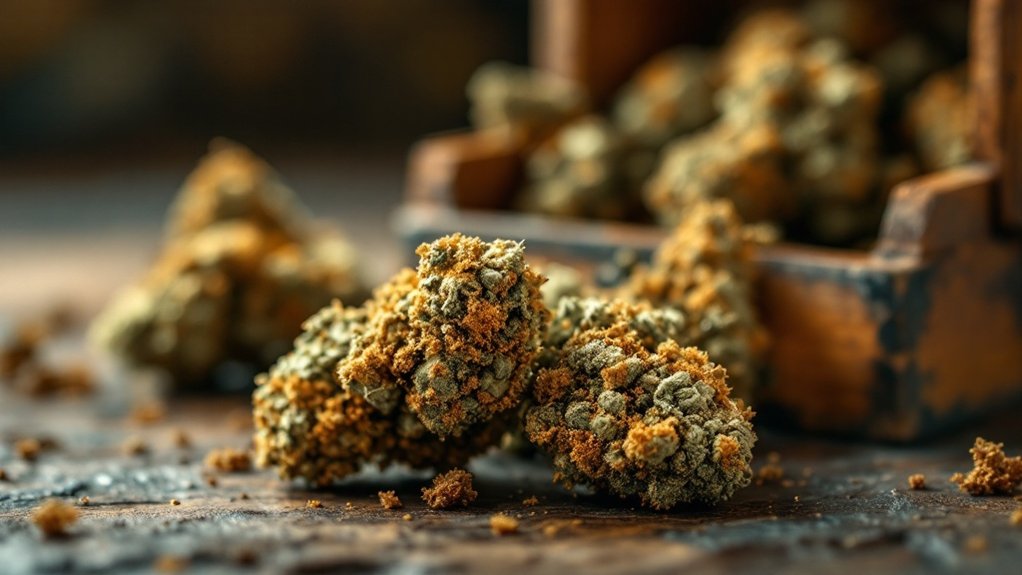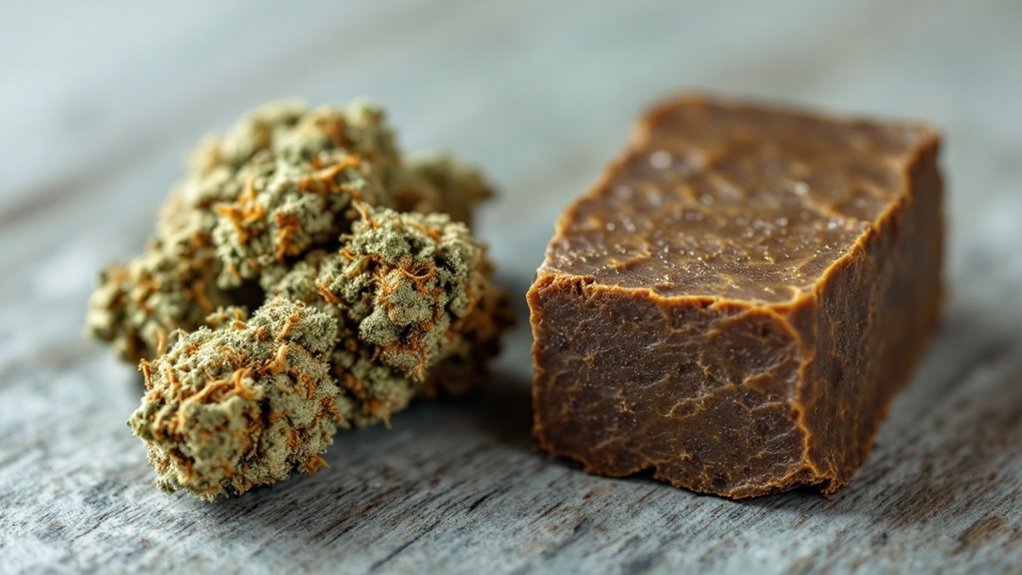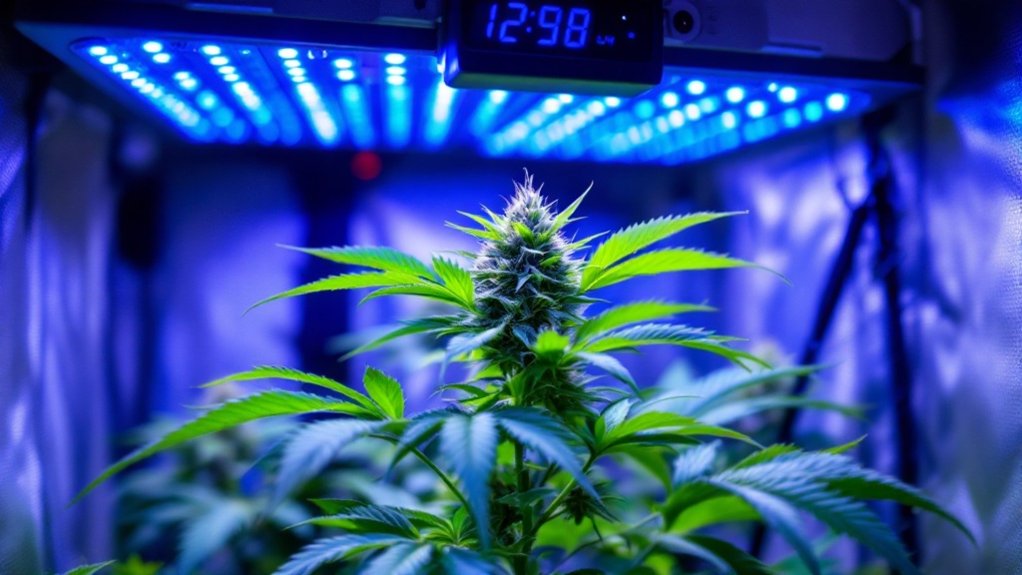CBN (cannabinol) is a minor cannabinoid that forms naturally when THC oxidizes in aging cannabis plants. Unlike THC, it produces mild psychoactive effects while functioning as a low-affinity partial agonist at cannabinoid receptors. Often called “the sleepy cannabinoid,” CBN has gained attention for its potential sleep-enhancing properties. Its legal status varies by jurisdiction, with hemp-derived CBN facing fewer restrictions than marijuana-derived compounds. The unique pharmacological profile of this compound offers intriguing possibilities for therapeutic applications.

Cannabinol, commonly known as CBN, represents a distinctive phytocannabinoid that forms naturally in the cannabis plant through a specific degradation process. Unlike major cannabinoids like THC and CBD, CBN occurs in lower concentrations and emerges when THC oxidizes due to prolonged exposure to heat, air, and light. This transformation happens as cannabis ages, which explains why older cannabis samples typically contain higher levels of CBN. The compound is classified as a classical cannabinoid based on its chemical structure.
CBN’s molecular structure features one additional aromatic ring compared to Δ9-THC, and unlike THC, it lacks double bond isomers and stereoisomers. When CBN undergoes oxidation, it can degrade into a compound called HU-345. The metabolic pathway of CBN involves the addition of hydroxyl groups at positions C9 or C11 following oral administration. These metabolic changes increase the molecule’s affinity and specificity for both CB1 and CB2 receptors in the human endocannabinoid system.
CBN’s unique structure and metabolic pathways enhance its binding affinity to cannabinoid receptors after oral consumption.
Though CBN derives from THC, it exhibits only mild psychoactive properties. It functions as a low-affinity partial agonist at cannabinoid receptors, producing subtle effects that differ considerably from THC’s pronounced euphoria and perception alterations. The compound has gained the nickname “the sleepy cannabinoid in old weed” due to anecdotal reports of its sedative properties. Recent studies suggest CBN could potentially aid sleep through its sedative properties. Its metabolite, 11-OH-CBN, demonstrates enhanced receptor binding compared to the parent molecule. CBN shows higher CB2 selectivity than THC, which may explain its distinct pharmacological profile and potential immune system effects.
The legal status of CBN varies by jurisdiction and often depends on its source. Hemp-derived CBN generally faces fewer restrictions across the United States compared to marijuana-derived compounds. As regulations evolve worldwide, CBN occupies a gray area in many regions, typically with less stringent controls than THC but more variable legal status than CBD.
Commercial interest in CBN continues to grow as researchers investigate its potential therapeutic applications. Contemporary cannabis products increasingly feature CBN, particularly in formulations targeting sleep enhancement. These products often combine CBN with other cannabinoids to leverage potential synergistic effects. The compound’s unique pharmacological profile has attracted attention from both the scientific community and commercial producers, despite the relatively limited research compared to more prominent cannabinoids.
Frequently Asked Questions
How Does CBN Compare to Delta-8 and Delta-9 THC?
CBN offers milder psychoactive effects than both Delta-8 and Delta-9 THC, with approximately 25% of Delta-9’s potency.
While Delta-9 THC delivers the most intense intoxication, and Delta-8 produces moderate psychoactive effects, CBN is generally non-intoxicating at standard doses.
CBN is primarily researched for its sedative qualities and potential neurological benefits, whereas Delta variants are known for appetite stimulation and discomfort relief.
All three cannabinoids have distinct legal statuses, with CBN typically facing fewer restrictions than its THC counterparts.
Will CBN Show up on a Drug Test?
CBN can indeed show up on drug tests, particularly standard urine immunoassays designed to detect THC metabolites.
Research from the University of Utah confirmed that concentrations as low as 100 ng/mL of CBN can trigger false positives for marijuana use.
While advanced confirmation testing with mass spectrometry can differentiate between CBN and THC metabolites, most standard workplace drug screenings lack this specificity, creating risk for CBN users subject to testing.
Can CBN Be Used for Sleep Disorders?
Research suggests CBN can be effective for certain sleep disorders, particularly for those who struggle with nighttime awakenings.
Clinical studies have shown that 20 mg of CBN considerably reduces insomnia symptoms compared to placebo, improving both NREM and REM sleep phases.
The cannabinoid works through its metabolite 11-OH-CBN, which activates CB1 receptors in the brain.
Currently available in tinctures, capsules and gummies, CBN appears particularly helpful for those who have trouble maintaining sleep throughout the night.
Is CBN Legal in All 50 States?
CBN’s legal status varies across the United States.
While hemp-derived CBN containing less than 0.3% THC is federally legal under the 2018 Farm Bill, individual states have implemented their own restrictions.
Some states have explicitly banned or regulated CBN products despite federal legality.
Marijuana-derived CBN remains federally illegal and is only permitted in states with legal cannabis programs.
Consumers should verify current state regulations before purchasing or possessing CBN products, as laws continue to evolve.
What Foods or Activities Enhance Cbn’s Effectiveness?
CBN’s effectiveness can be greatly enhanced by consuming high-fat foods, which improve its bioaccessibility and absorption.
Olive oil increases CBN recovery in the micellar fraction by 22-fold compared to the fasted state, while sesame oil demonstrates approximately 30% recovery.
Medium-high fat meals enhance cannabinoid bioavailability due to CBN’s highly lipophilic properties.
Additionally, combining CBN with CBD may affect sleep quality, though CBD has opposing effects on appetite compared to CBN’s stimulating properties.









